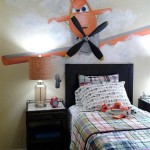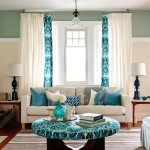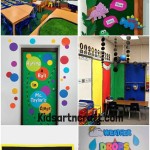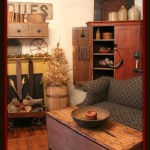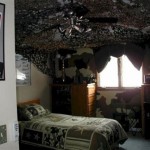Creative Room Decorating Strategies: Beyond Conventional Options
Decorating a room effectively involves thoughtful planning and the application of various design principles. When foregoing traditional decorative elements such as balloons, alternative strategies become paramount. The focus shifts to utilizing color, texture, lighting, and strategic placement of furniture and accessories to create a visually appealing and functionally optimized space. This article explores several techniques and considerations for achieving a well-decorated room without relying on conventional, often temporary, decorations.
Color Palette Selection and Implementation
The selection of a color palette is a fundamental aspect of room decoration. Colors significantly influence the mood and atmosphere of a space. A well-chosen palette can enhance the perceived size of the room, create a sense of warmth or coolness, and tie together the various design elements. When selecting a color palette, consider the purpose of the room, the existing architectural features, and the desired aesthetic.
One approach is to start with a neutral base color for the walls. Neutral colors such as white, beige, or gray provide a versatile backdrop that allows other colors to be incorporated through furniture, textiles, and accessories. This approach makes it easy to update the room's aesthetic over time without requiring a complete repaint.
Accent colors can be introduced strategically to add visual interest and depth. Accent colors can be used on a single wall, in decorative pillows, rugs, artwork, or other accessories. Consider the color wheel when selecting accent colors. Complementary colors (opposite each other on the color wheel) create a vibrant and dynamic contrast, while analogous colors (adjacent to each other) offer a more harmonious and subtle effect. For example, blue and orange are complementary colors, while blue, blue-green, and green are analogous colors.
The application of paint techniques can also enhance the impact of the color palette. Techniques such as textured paint, stenciling, or faux finishes can add visual interest and depth to the walls. These techniques can be subtle or bold, depending on the desired effect. Proper preparation of the walls is essential for achieving a successful paint finish. This includes cleaning the walls, filling any holes or cracks, and applying a primer.
Consider the lighting in the room when selecting a color palette. Colors appear differently under different lighting conditions. Natural light tends to make colors appear brighter and more vibrant, while artificial light can alter the perceived hue and saturation. Test paint samples in the room under different lighting conditions before committing to a particular color.
The psychology of color is an important consideration. Different colors evoke different emotions and associations. For example, blue is often associated with calmness and serenity, while red is associated with energy and excitement. Understanding the psychology of color can help one choose a palette that creates the desired mood in the room.
The use of different shades and tones of the same color can create a cohesive and harmonious look. This approach involves selecting a single color and then using lighter and darker variations of that color throughout the room. This creates a sense of depth and visual interest without introducing a wide range of colors.
Texture, Pattern, and Textiles
Texture, pattern, and textiles play a vital role in creating a visually rich and engaging space. They add depth and dimension to a room, preventing it from feeling flat or sterile. These elements can be incorporated through a variety of materials and techniques, including fabrics, rugs, wall coverings, and decorative accessories.
The strategic use of texture can create a sense of warmth and comfort. Consider incorporating a variety of textures, such as rough-hewn wood, soft wool, smooth silk, or textured wallpaper. The contrast between different textures adds visual interest and prevents the room from feeling monotonous.
Pattern can be used to add visual interest and personality to a room. Patterns can be incorporated through fabrics, rugs, wall coverings, or decorative accessories. When selecting patterns, consider the scale and complexity of the pattern in relation to the size of the room. Larger patterns can be overwhelming in small spaces, while smaller patterns may get lost in larger spaces.
Textiles are a versatile tool for adding color, texture, and pattern to a room. Consider using textiles such as curtains, rugs, throw pillows, and blankets to introduce these elements. Different fabrics can create different effects. For example, silk and velvet add a touch of luxury, while linen and cotton create a more casual and relaxed atmosphere.
Layering textiles is a technique that involves combining different fabrics with varying textures and patterns to create a sense of depth and visual interest. For example, layer a soft wool rug over a jute rug for added texture and warmth. Or, combine throw pillows in different sizes, shapes, and patterns on a sofa.
Consider the texture of the walls when selecting wall coverings. Textured wallpaper can add depth and dimension to the room without requiring the use of paint techniques. Alternatively, consider using textured paint techniques to create a similar effect. Proper installation of wallpaper or textured paint is essential for achieving a professional-looking result.
Rugs are an essential element in most rooms. They define the seating area, add warmth underfoot, and introduce color, texture, and pattern. When selecting a rug, consider the size of the room and the layout of the furniture. The rug should be large enough to anchor the furniture and create a cohesive seating area. A rug that is too small can make the room feel disjointed.
The use of natural elements, such as wood, stone, and plants, can add texture and visual interest to a room. These elements create a connection to the outdoors and add a sense of tranquility and calm. Consider incorporating wood furniture, stone accents, or potted plants into the room's design.
Lighting and Ambiance
Lighting is a critical component of room decoration, influencing the mood, functionality, and overall aesthetic of the space. A well-designed lighting scheme incorporates a combination of different types of lighting to create a balanced and versatile environment. Understanding the principles of lighting is key to creating a space that is both visually appealing and functional.
Ambient lighting provides overall illumination for the room. It is typically provided by ceiling fixtures, such as chandeliers, pendant lights, or recessed lighting. Ambient lighting should be soft and diffused to create a comfortable and inviting atmosphere. Dimmers allow one to adjust the level of ambient lighting to suit different activities and moods.
Task lighting provides focused illumination for specific activities, such as reading, cooking, or working. Task lighting is typically provided by lamps, such as desk lamps, floor lamps, or under-cabinet lighting. Task lighting should be bright enough to illuminate the task at hand without causing glare or eye strain.
Accent lighting highlights specific features in the room, such as artwork, architectural details, or decorative accessories. Accent lighting is typically provided by spotlights, track lighting, or picture lights. Accent lighting can add depth and dimension to the room and draw attention to interesting focal points.
Natural light is an invaluable resource for creating a bright and cheerful atmosphere. Maximize the amount of natural light entering the room by keeping windows clean and unobstructed. Consider using light-colored curtains or blinds that allow natural light to filter through. Mirrors can also be used to reflect natural light and brighten up dark corners.
The color temperature of light bulbs affects the overall mood of the room. Warm light (2700K-3000K) creates a cozy and inviting atmosphere, while cool light (4000K-5000K) creates a more energetic and focused environment. Select light bulbs with the appropriate color temperature for the room and the intended activities.
Consider using decorative lighting fixtures to add visual interest and personality to the room. Chandeliers, pendant lights, and sconces can serve as focal points and enhance the overall aesthetic of the space. Select lighting fixtures that complement the style and color palette of the room.
The placement of lighting fixtures is crucial for creating a balanced and effective lighting scheme. Position lighting fixtures strategically to illuminate key areas of the room and avoid creating shadows or glare. Consider the height and scale of the lighting fixtures in relation to the size of the room and the layout of the furniture.
The use of smart lighting systems allows one to control the lighting in the room remotely. Smart lighting systems can be programmed to adjust the brightness, color temperature, and timing of the lights automatically. This can create a more comfortable and convenient lighting experience.
Candles and lanterns can be used to create a warm and romantic atmosphere. Place candles and lanterns strategically around the room to add a soft and flickering light source. Be sure to use candles safely and keep them away from flammable materials.
How To Decorate My Home For Son S Birthday Party With Balloons Only Quora

Room Decoration For Birthday Surprise Ideas Best Of 2025

Our 5 Best Anniversary Room Decoration Ideas Togetherv Blog

10 Balloon Decorating Ideas Without Helium

Romantic Bedroom Decor Ideas Petals Balloons Bed Canopy And Lights Bridal Room

Budget Anniversary Room Decoration

Birthday Birthdaysurprise Birthdaybedroomdecor Bedroom Decorations Surp 18th Surprise Room

Room Decoration With Balloons At Rs 2000 Person In Nizamabad Id 22712025962

Valentine S Bedroom Decor With Balloons

Birthday Surprise Room Decoration For Husband Balloon At Home Party Ideas
